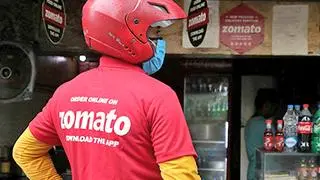Energy infrastructure and services company SUN Mobility is gearing up to launch commercial solutions for heavy-duty vehicles such as buses and trucks in the next 12 months, according to a top-level company executive.
Over the past three years, the practice of swapping batteries in the trucking industry has surged from 2 per cent to 50 per cent, underscoring the significant market demand, Chetan Maini, Co-founder and Chairman, told businessLine.
Recalling the initial plans, Maini said the company had planned to focus on heavy-duty solutions, but the Covid-19 pandemic disrupted those plans, prompting a shift towards two-wheeler and three-wheeler delivery solutions due to the increase in home deliveries and the need to reduce costs
Also read: SUN Mobility and Bluwheelz to deploy 15,000 E2W and 1,000 E3W
“The solution is currently in development and will come to the market in 12 months. Since our first-generation station came five years ago, as a pilot, the new generation will showcase significant enhancements over the last one,” he added.
International footprint
In the past, the company has partnered with Ashok Leyland for a pilot project, is currently working on several others and will announce them at the right time.
Further, it is also working on establishing an international footprint in three markets: South-East Asia, Africa and South America. In fact, several of the Indian OEMs have a strong presence in these geographies, especially in Africa and South America, the Chairman said.
Also read: Higher corporate sponsorships aid Durga puja pandal budgets
SUN Mobility is conducting tests in Peru with Siemens Energy and plans to be in some African regions by December. Additionally, they are testing vehicles in the UK with a leading delivery company to gain insights into these markets.
Fundraise plan
The company has raised over $140 million in funding to date and plans to continue raising funds as needed.
However, they aim to become more asset-light as partnerships evolve and reduce the need for heavy capital investments.
For context, the energy company is also slowly transitioning from mobility as a service (MaaS), which is more asset-heavy, to battery as a service (BaaS). “Today, we are 75 per cent MaaS, 25 per cent BaaS, and probably in 3–4 years, we expect to be 90 per cent BaaS and 10 per cent MaaS.”
Also read: Pilipinas Shell signs pact with SUN Mobility for battery swapping tech
Having already established a network of over 600 stations across 18 cities, it is now actively looking at developing a station via the franchise model, which will also help reduce its internal capex. “So far, we have close to over 40 franchises signed on already.”
As it is working on rolling out heavy-duty solutions, it will also looking at establishing a new facility dedicated to the HEV business. While Maini didn’t reveal the capex outlaid for the same, he said that they had shortlisted two places.
In terms of the two- and three-wheelers, there are three assembly lines. “Today, we can do 2 lakh batteries on those assembly lines per year. And with automation, we can go to half a million. So, for the next year and a half or so, we will be good with our current plant with the automation improvements we’re moving into.”







Comments
Comments have to be in English, and in full sentences. They cannot be abusive or personal. Please abide by our community guidelines for posting your comments.
We have migrated to a new commenting platform. If you are already a registered user of TheHindu Businessline and logged in, you may continue to engage with our articles. If you do not have an account please register and login to post comments. Users can access their older comments by logging into their accounts on Vuukle.